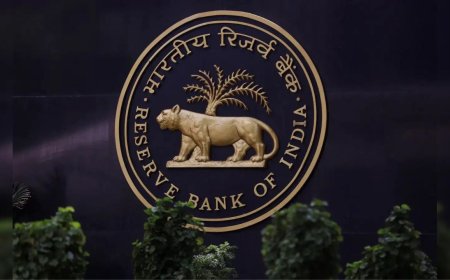A new fertilizer allocation plan is in the works—a hot potato or a crucial step?
The Indian government is planning a new fertilizer allocation policy aiming for efficiency and targeted subsidies. Will it deliver results or face political hurdles?

Government Rethinks Fertilizer Allocation: Reform or Risk?
In a move that could redefine India's agriculture support framework, the government is reportedly working on a new fertilizer allocation plan aimed at improving efficiency, reducing misuse, and ensuring timely availability to farmers. With the Kharif season around the corner and subsidy bills ballooning, the proposal has sparked debate among policymakers, industry stakeholders, and farmer unions alike.
The plan, still in its drafting phase, is expected to address systemic inefficiencies by transitioning from a blanket subsidy model to a more targeted, perhaps even digitally monitored, distribution strategy. But while the objectives appear sound, the road to implementation may be riddled with political and logistical challenges.
Why Fertilizer Policy Matters
India is the second-largest consumer of fertilizers globally, with urea, DAP (Di-ammonium Phosphate), and MOP (Muriate of Potash) being the mainstay nutrients. To shield farmers from global price volatility, the government provides heavy subsidies—over ₹2 lakh crore was allocated for fertilizers in the FY2023-24 budget.
However, the current distribution method has been criticized for inefficiencies, hoarding, and diversion of subsidized fertilizers for non-agricultural use. “What we need is smart delivery. The new plan could potentially involve linking fertilizer distribution with Aadhaar, soil health cards, or e-KYC verification,” said Dr. Ramesh Chand, a member of NITI Aayog.
Features Under Consideration
Though not yet officially released, insider sources suggest the new policy may include:
-
Direct Benefit Transfers (DBT): Instead of subsidizing manufacturers, subsidies could go directly to farmers' bank accounts.
-
Geo-tagging of Warehouses: To track real-time inventory and prevent black marketing.
-
Cap Based on Landholding: Fertilizer limits proportionate to the land farmed, verified via digital land records.
-
Soil-Based Recommendations: Tailored fertilizer usage based on individual soil health reports.
“These measures could drive optimal usage and reduce wastage,” said Krishnan V, agri-economist at the Indian Council for Research on International Economic Relations (ICRIER). “But the success hinges on robust digital infrastructure and ground-level training.”
Farmer Concerns and Political Ramifications
Not everyone is on board. Farmer groups, particularly in northern states like Punjab and Haryana, view the potential rationing of fertilizers as a threat to productivity. “This is a classic case of policymaking without farmer consultation,” said Bhupinder Singh, spokesperson for Bhartiya Kisan Union. “How can you cap inputs without understanding yield requirements?”
The issue is especially sensitive with key state elections due in 2025 and the general election in 2029. Past attempts to reform fertilizer policy—such as the partial nutrient-based subsidy (NBS) introduced in 2010—have faced political pushback.
Industry Impact and Market Response
From an industrial perspective, fertilizer manufacturers may see a shift in revenue models. “DBT to farmers means companies will no longer receive assured government reimbursements. That’s a big change,” said Meera Deshpande, analyst at Motilal Oswal. Companies like Chambal Fertilisers, National Fertilizers Ltd, and Coromandel International could witness margin volatility during the transition.
However, stock performance remains steady, with most fertilizer stocks holding or posting marginal gains in anticipation of increased demand during the sowing season. The Nifty Fertilizers Index rose 2.1% over the past week, reflecting investor optimism tempered by caution.
Investor Outlook: Proceed With Measured Optimism
Investors are advised to watch for announcements from the Ministry of Chemicals and Fertilizers and track pilot program rollouts. If the new policy incorporates digital efficiencies without hurting demand, companies with stronger rural distribution networks could benefit.
“Long-term, this reform is positive for both the government and the market,” noted Anand Rao, fund manager at Axis Mutual Fund. “Short-term volatility is expected, but structurally, it will lead to better subsidy targeting and fiscal management.”
Between Reform and Repercussion
The proposed fertilizer allocation plan stands at the intersection of fiscal prudence and agricultural necessity. While the intent is clearly to modernize and streamline, execution will be key. The challenge for policymakers will be to balance efficiency with equity and innovation with inclusivity. Until then, the debate continues—is this a hot potato or a much-needed step forward?
What's Your Reaction?
 Like
0
Like
0
 Dislike
0
Dislike
0
 Love
0
Love
0
 Funny
0
Funny
0
 Angry
0
Angry
0
 Sad
0
Sad
0
 Wow
0
Wow
0













































































